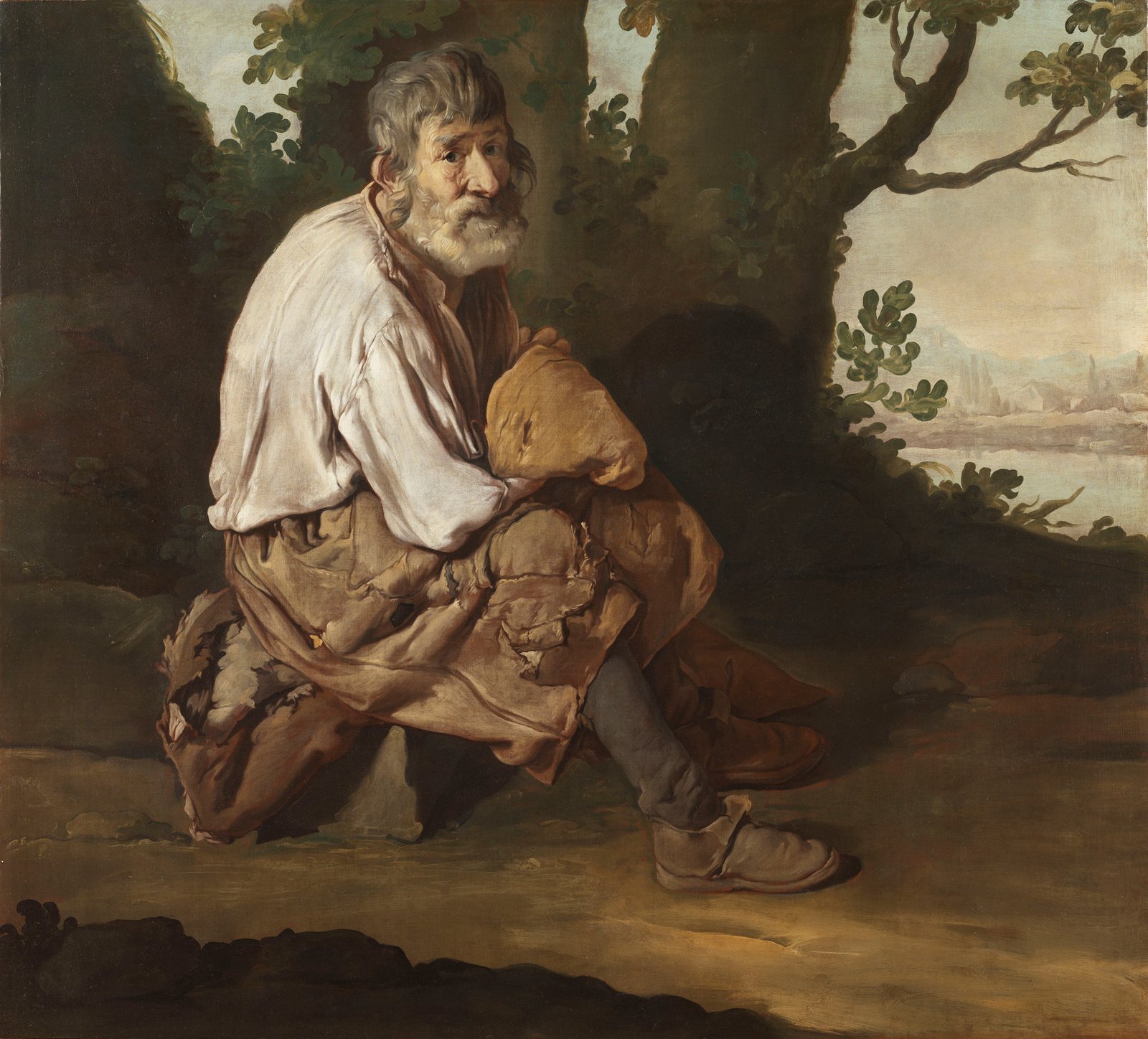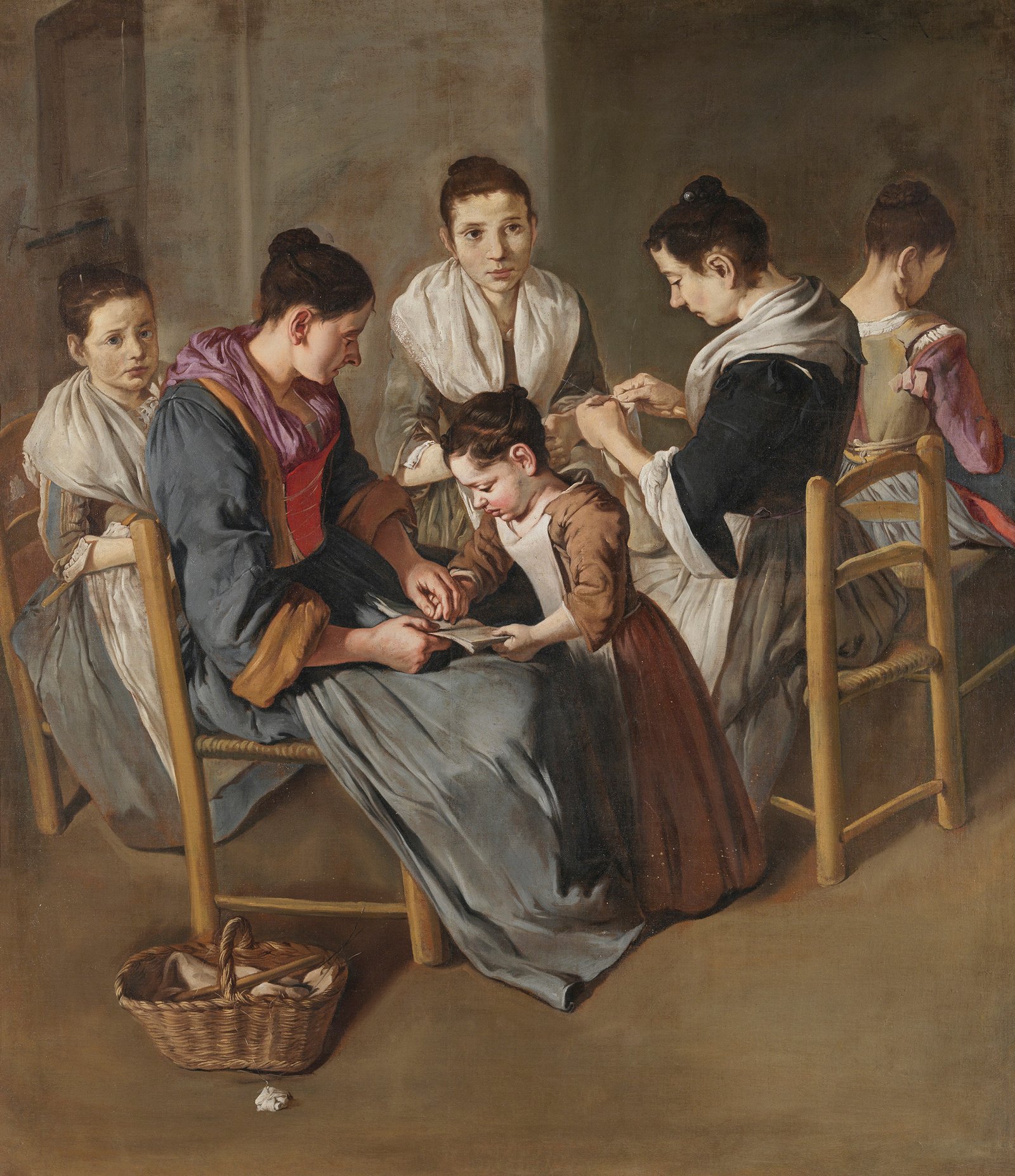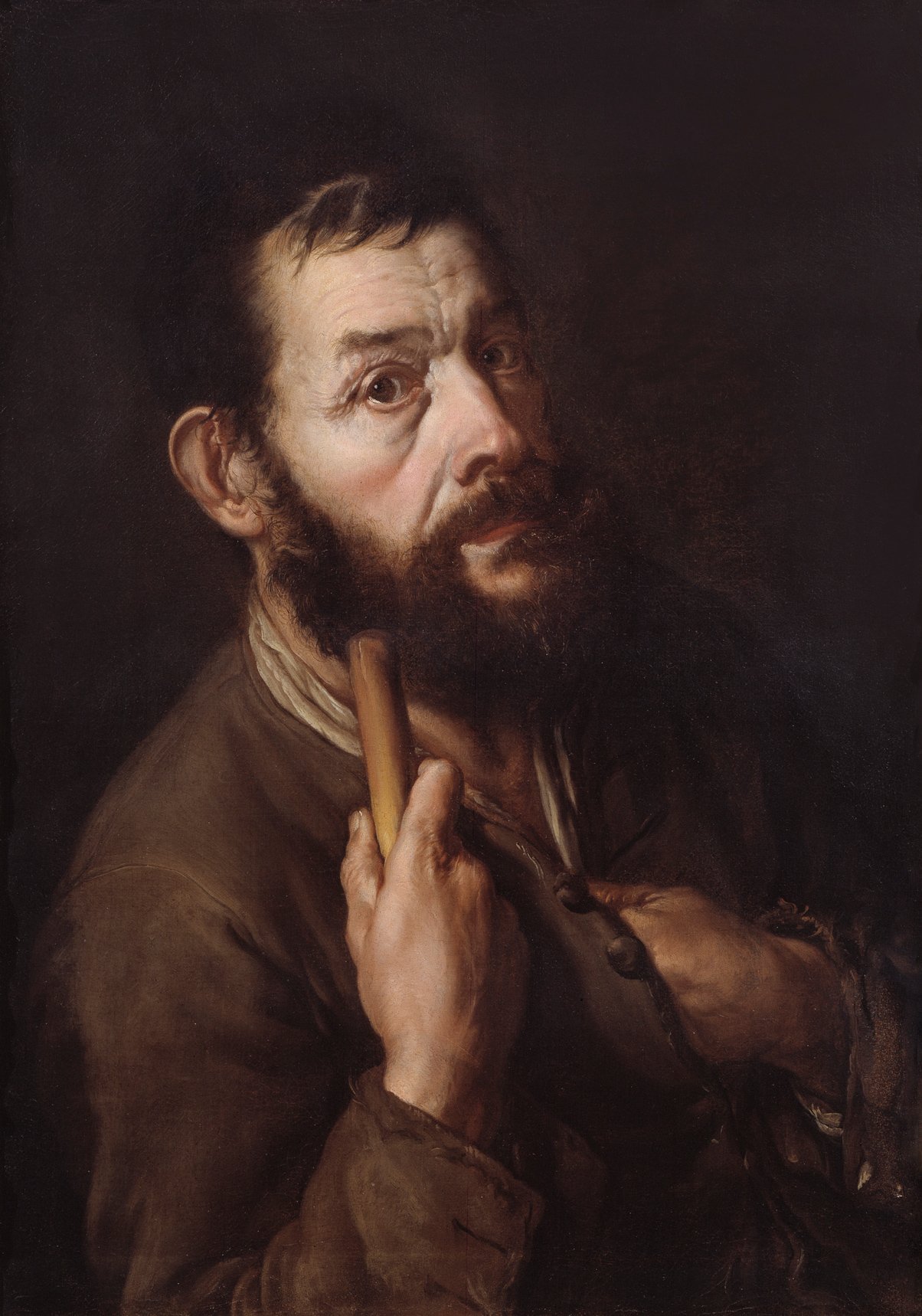Why would the rich showcase the poor: the art of Giacomo Ceruti
The 18th century depictions of the poor by Giacomo Ceruti was extensively collected and displayed by the nobles in Brescia. Here is why
The painting of Giacomo Ceruti during his stay in Brescia remains exceptional no matter how many of his past influences have come to light in recent times; one can say it is the most significant artistic representation of the poor in Italy until then. The fact that collectors of these works were educated patrons of aristocratic extraction prompted the famous art historian Roberto Longhi to say, on the occasion of the exhibition “The painters of reality”:
A few years ago I suggested that the severe and great Ceruti was forced to provide his masterpiece depictions of the poor for the entertainment of Brescian nobles in the suburban villas of Garda. Today I find that the hypothesis does not do justice to the relationship between Ceruti and his patrons. […] It was not a question of periodically acquiring, with benign condescension, a few pictures from a bizarre though talented painter; it was one of filling one’s villa with these insolent and gigantic “reportages” of his. Was it for the sake of good painting? Impossible, because the taste that could declare Ceruti’s painting good, bearable even, had not yet been born.
With their severe tone, Ceruti’s portraits of poverty from the so-called Padernello cycle constitute an extraordinary phenomenon in eighteenth-century Lombardy in terms of number, subject, and pictorial language. This phenomenon cannot be explained except by imagining some kind of particular relationship between the artist and his audience.

Especially with the art of Moretto, Brescia had experienced an extraordinary season of realist painting in the sixteenth century: It matured a significant detachment from Titian’s palette to achieve an almost monochromatic and dry matterism, which played on the predominance of grays illuminated by a cold light. At the same time, even in the sacred scenes of the Brescian Renaissance painters, there was an abundant presence of lower class figures, outlined with a lively spirit of observation without indulging in stereotypes. However, it is in the eighteenth century Brescian society that recent studies have sought the conditions that made possible the kind of painting Ceruti was championing. Some of these hypotheses are represented here, critically argued.
A rather consolidated scholarly tradition has mostly considered the social conditions of Brescia during the late modern age to find the reasons for the success of Giacomo Ceruti with noble clients. At the beginning of the eighteenth century, from a demographic and economic point of view, Brescia was only the shadow of the city that previously developed in under Venetian sovereignty. The local aristocracy – excluded from any state-level public office and therefore, essentially, from fiscal, military and judicial control of the territory – lived in a condition of immobility. They took refuge in the mythology of their ancient origins, in their military tradition, and isolation. Relegated to a concrete, almost earthly dimension connected to the daily administration of their goods, the Brescia nobles might have been predisposed, according to Bruno Passamani, to a sort of “realistic vision,” which might have formed the ground for Ceruti’s painting.
This historiographical suggestion goes hand in hand with the idea that Ceruti was exposed daily to the poor conditions of the urban population, leading to an anachronistic interpretation of his painting and the idea of a presumed empathy between Ceruti’s clients and the city’s poor. Further crises (disease and economic downturn hit the city hard in the first half of the 18th century) corroborated this theory. In the years 1756-1758, the poor were an estimated 71% of the total population in some parts of Brescia. Faced with a phenomenon of this magnitude, where the miserables could hardly be controlled by the incapacitated and impoverished nobles, solidarity became the answer. Some sort of welfare state had existed in the city since the early fifteenth century, with structured charities divided according to needs and degree of recovery–education into a profession was provided to those who could receive it, seeking moral and material redemption for them. This system was concretely entrusted to the main patrician families, whose exponents, alongside the clergy, covered the posts of directors and administrators of those same institutions which their ancestors had founded and financed two centuries earlier.

Between 1704 and 1743, these welfare institutions were radically restructured. In the period of greatest activity for Giacomo Ceruti, the Brescian ruling elite conceived and implemented various social policies that mostly eluded rather than solving the problem of poverty. Deeming the poor as easily corruptible subjects, these institutes’ new regulations stressed the utmost chastisement, imposing a quasi monastic life to their recipients, especially the female ones: modest uniforms, prohibition to wear ornaments, and standard hairstyle. Incited to silence and prayer, they learned women’s jobs, such as sewing, mending, embroidery and bobbin lace. Their destiny was most likely to become nuns or to serve in an aristocratic household. Ceruti’s depiction of the “Sewing School” now in the Pinacoteca Tosio Martinengo allows us to peek right into this sort of environment. The painter greatly renders the attitudes and expressions of the figures in their specific backgrounds, embracing a suited palette and gradually drier brushstroke.
None of what’s been said so far implies that the painter recognized himself in the subjects he portrayed, let alone proving there was a sense of empathy on the part of the patrons towards the humble, which were represented by the artist and destined to the walls of their villas. Much uncertainty as to what prompted the Brescian nobles to commission the well-known ‘pitocchi’ (the poor) from Ceruti remains, and so does the mystery of who exactly were these patrons in Brescia. What is certain is that the Venetian patrician Andrea Memmo, podestà of the city in the years 1726-1728, commissioned from the artist a cycle of canvases, now lost, with portraits and history scenes for the Broletto palace, seat of the lagoon representatives in town. This acquaintance would initially put Ceruti in contact with the most advanced currents of Venetian collecting, sensitive to the search for truth and humanistic themes.
Perhaps through Memmo himself, Giacomo Ceruti may have entered the sphere of influence of the bishop of Brescia, the bibliophile Angelo Maria Querini, a Venetian of origin and a personality with a great influence in the city, from the year of his establishment (1727) to that of his death (1755). A man of extraordinary culture, prefect of the Vatican Library, inserted in a dense network of relationships with both Catholic and Protestant scholars, philosophers, thinkers and theologians, he had among his correspondents the most important intellectuals of Italy and pre-Enlightenment Europe. Under his guidance, a fundamental transition “from the love of arms to that of letters” matured in the Brescian nobility. The vocation for erudite research, free from sectarian prejudices, and the role assigned to modern thought in the awakening of the moral and religious conscience of the faithful manifested themselves in the intellectual tolerance with which he chose collaborators and allies. Among the latter, the names of many Jansenist thinkers recur, mostly moved by rationalist instances and in favor of a better social justice, as well as an austere morality alien to the formalisms of the Catholic church.
Further research into his Venetian phase suggests that Ceruti was close to some of the followers of Jansenism from the Benedictine orders in Brescia, Padua and Bergamo. Jansenist thinkers typically believed that rigorous poverty of spirit as well as material poverty constituted the sign of a predestination and of the election to a good afterlife. Furthermore, in concrete pastoral activity and in the new Jansenist pedagogy, the issue of assistance to the poor was far from secondary, above all considering the modernization and rationalization of their charities.
Ultimately, Jansenists were alleged patrons of Giacomo Ceruti. Among them was Giulio Barbisoni, expelled from his congregation for an excessively marked inclination towards Jansenist ideas, and the Brescian Congregation of the Oratoriani della Pace, which was strongly affected by the Jansenist doctrine. An ancient guide to the city records the presence in Barbisoni’s room of “Two half portraits, one of an old man, the other of a woman by Ceruti”, as well as six other works by the painter in the adjacent rooms. Beyond Jansenist inclinations, the Oratoriani were nonetheless prone to the rehabilitation and education of the abandoned or misguided young, some of which are depicted in the Ceruti works recorded close to Barbisoni.
It remains difficult to establish whether and to what extent the concentration in Brescia of the masterpieces of the so-called Padernello cycle, and more generally of Ceruti’s early works, can be related to the Catholic conception of welfare consolidated by the noble tradition in the city, or with the results of the Jansenist movement. All of his choices might have been again “simple” divertissement, following a taste for genre painting that had important precedents and responded to a precise stylistic canon.
What can be surely dismissed is the thesis put forward by Giorgio Manganelli after his visit to the Santa Giulia exhibition in 1987, however suggestive and masterfully written. Rejecting the idea that Ceruti’s painting expresses an “affectionate participation in the world of the poor” and a “Christian solicitude for the humble, the unfortunate”, the historian declares that “Ceruti’s poor are a rhetorical register, a choice of language” that arises “not from Christian love, but from absolute moral indifference, from a splendid and grim pictorial passion.” Unlikely so, and Longhi’s question comes to mind to problematize this view: who would want these “insolent and gigantic reportages” in their home?

A clearer provenance of the thirteen canvases that Giuseppe De Logu discovered in 1931 in the castle of Padernello thanks to the recommendation of Fausto Lechi, which studies have shown to be part of a nucleus of twenty-two overall (the cycle was auctioned along with the rest of Gerolamo Fenaroli’s inheritance in 1882), could shed some light on this question. Two possible hypotheses now exist. The first maintains that the cycle was entirely commissioned by the Avogadro family for their residences. Indeed three works are mentioned in the inventory of their Rezzato villa, dated 1734. In 1800 their patrimony merged with that of the Fenaroli, who kept nine paintings by Ceruti in their city palace. The curious increase in numbers (from three, to nine, to twenty two) could be explained by the idea that the Fenaroli had brought together works conserved in other Avogadro homes and never registered.
A recent investigation has highlighted Giacomo Ceruti’s links with the Avogadro family, and specifically with Giovanni (1680-1742), one of the seven sons of Count Scipione who built up the large family collection and whose sumptuous portrait the artist painted around 1730. A dandy devoted to carefree prodigality, Giovanni Avogadro nurtured odd collecting interests: he was the most important client of Giorgio Duranti, a Brescian painter specialized in the depiction of birds; he commissioned a Chinese-inspired sitting room from Faustino Bocchi, the author of extremely successful genre paintings of “pygmies”, characteristic miniature figures of men and women in ridiculous or grotesque situations. In his house, Avogadro also kept two paintings on glass by Ceruti and a portrait of a girl, set in the boiseries of an elegant fireplace. This reconstruction would therefore bring the genesis of the cycle discovered in Padernello closer to a context mainly characterized by bizarre collections and genre painting.
A second hypothesis relating to the original provenance of the Padernello canvases hinges on their number, twenty two. If only three were from the Avogadro, it is believed the other nineteen came from the Lechi family. (Mina Gregori in 1982 mentions and refutes the hypothesis, which was later taken up by Piero Lechi and Adriana Conconi Fedrigolli.) In the inventory of Pietro Lechi’s assets, produced in between 1768 and 1769 for the division between his sons Faustino and Galliano, a total of twenty “paintings of beggars” are recorded, distributed in various residences between the city and the countryside, but only in one case with the explicit attribution to Ceruti. According to Lechi and Conconi Fedrigolli, one of these twenty paintings, which is presumed to be Ceruti’s, would have remained with the Lechi family up to the present day, while the other nineteen would have changed hands at an unspecified moment. The transfer to the Fenaroli family should perhaps be placed between the beginning of the 19th century, when the Lechi family went through a period of economic difficulty following the anti-noble raids of 1799, and 1814, when an important division of inheritance; in any case, they must have parted with them by 1820, when the Fenaroli inventories record ten works by Ceruti, seven more than those already in their hands.
Giovanni Antonio Fenaroli Avogadro (1749-1825) might be the one from the Fenaroli responsible for acquiring the paintings from the Lechi, assuming the family had them in the first place. Giovanni Antonio administered the assets to be split between Luigi and Pietro Lechi (sons of Faustino) in the early nineteenth century; for a long time he boasted important credits from the Lechi heirs, some of whom were his close relatives. In the inventories of Giovanni Antonio Fenaroli Avogadro’s movable assets, drawn up post mortem, there is indeed a large group of Ceruti’s beggars.

There are also material traces of more extensive relations between Giacomo Ceruti and the Lechi: two remarkable canvases depicting Santina Lechi and the abbot Angelo Lechi, now kept at the Lechi Museum of Montichiari. A member of the secular clergy and brother of Pietro, whose post-mortem inventory features twenty “paintings of beggars”, Angelo Lechi was bound by the religious rule in the family residence known as Aspes, in San Zeno Naviglio, in the suburbs of Brescia. The inventories drawn up after his death record no less than fourteen paintings of beggars. His portrait, executed by Ceruti around 1730, shows a severe man, evoking his austere morality.
Angelo is still to be fully investigated and a good starting point could be the dedication addressed to him in the work Lezioni morali sopra l’ingratitudine umana ai benefizi divini by the Brescian Capuchin father Giovanni Crisostomo Rizzardi, son of the printer Gian Maria , publisher of the book in 1748. A further important source might be the dedication, again addressed to Abbot Angelo and his brothers, in the exergue of the second edition of the Cappuccino Scozzese (Giovanni Battista Bossini, Brescia 1740), edited by Father Timoteo Colpani, master of philosophical and theological studies under whom, among others, Father Viatore Bianchi, known for his Jansenist positions, was trained.
Despite the caution imposed by the weak archival starting point, which suffers from the almost total absence of the painter’s name from the eighteenth-century records, it should still be added that at the time in which Ceruti’s paintings are presumed to have been made, the Lechi family had not yet obtained the title of counts (it was only later acquired by Venetian concession in 1745) and therefore the process of assimilation to the noble class had not yet been completed. The considerable liquidity available to the family – accumulated by administering iron forges and exercising mercantile and financial activities, then abandoned during the eighteenth century – allowed the Lechi to accumulate one of the largest land holdings in the city.
The gap between these multiple hypotheses on the origin of the famous series of the beggars is an indication of the many facets of eighteenth-century Brescian society and of the complex stratification of possible cultural consonances with Giacomo Ceruti’s painting. While waiting to discover the true origin of the already substantial Fenaroli collection, and taking for granted the debts that the artist had with a consolidated pictorial tradition, we must not forget to read Ceruti’s work primarily as a phenomenon that is exquisitely artistic, indebted to a long iconographic tradition and consonant with widespread sensitivities. Its genesis cannot be reduced to a sterile cause-effect mechanism, justifiable with impure acts of art historical anachronism.
March 30, 2023
